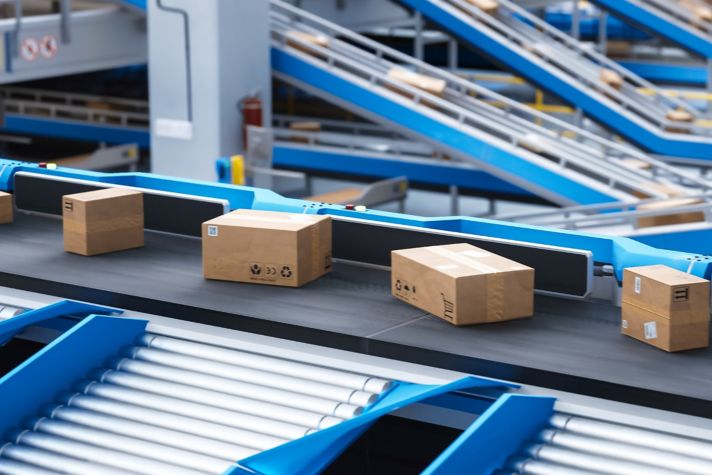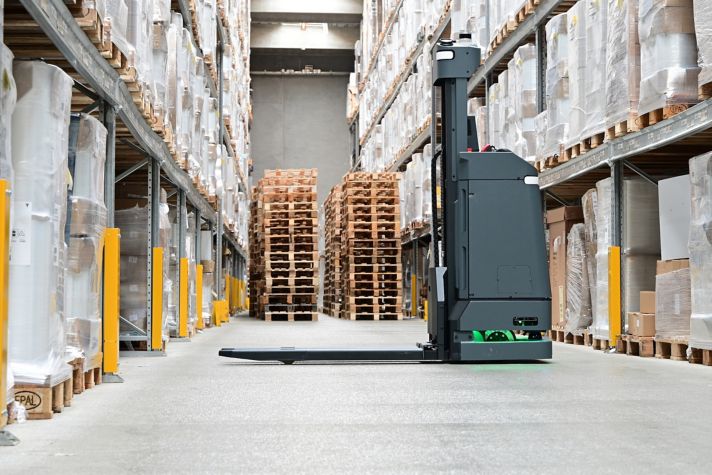Executive Summary: Economic Value
With more than four decades of proven expertise, Compressor Controls Corporation (CCC) is the recognized global leader in turbomachinery optimization. Our experience spans four key domains—process, machinery, instrumentation and control—and thousands of machinery control solutions across industries. At the core of CCC’s expertise is using turbomachinery optimization to deliver tangible economic benefits for our global customers.
When CCC conducted a Preventive Maintenance (PM) visit for a major national oil and gas company in the Middle East, it identified an opportunity to optimize the turbomachinery of its gas compression facility. By implementing our five-step turbomachinery performance and process optimization strategy, CCC identified and implemented improvements that saved the end user $1.864 million per year in fuel gas consumption alone.
Process Background
A major national oil and gas company in the Middle East operates a complex gas compression facility. After compressing natural gas from multiple feeders, the plant supplies it to several major gas processing and Natural Gas Liquids (NGL) facilities. The simplified process diagram of this complex facility is illustrated in Figure 1. The gas compression facility is equipped with two parallel medium-pressure (MP) booster compressors. Combining the MP booster compressors and other incoming MP feeds, the facility’s MP manifold feeds the high-pressure (HP) trains through two flow controllers. An HP compression section includes older northside parallel trains and newer southside parallel trains that receive the gas from the MP manifold and other feeds such as the end users’ onshore HP feed and remote onshore HP/lean gas feed. The main objective of the HP facilities is to prioritize gas delivery among three main end-user gas processing facilities.
The facility’s northside HP gas compression is achieved by two parallel gas-turbine driven compressors. The southside’s HP gas compression is performed by two parallel gas turbine-driven compressors. All the facility’s MP and HP compressors are equipped with CCC anti-surge controllers, which calculate and monitor the compressor proximity-to-surge variable and send an appropriate control response to the respective stage recycle valve. The current CCC control system also features a master pressure controller that controls the suction header pressure of each pair of MP, HP-North and HP-South compressor trains. This master pressure controller sends its control response to a load-sharing controller dedicated to each compressor, ensuring that the two compressors in a parallel set are equally loaded based on its compressor proximity-to-surge calculated variable. The control system accomplishes this by sending the control response to the gas turbine speed controller.

Figure 1 – Process Schematic Overview
Identifying the Problem
CCC has an added value service agreement with this end user, through which it conducts regularly scheduled Preventive Maintenance (PM) visits. In addition to verifying that the installed CCC control equipment is functioning correctly, we use these visits to identify new opportunities for turbomachinery optimization and/or enhancement. For this reason, we monitor the mechanical condition of the end-user’s rotating equipment, associated measuring equipment and control valves. We also collaborate with the end-user personnel responsible for interpreting this gathered data, leveraging our collective expertise to identify the proper course of action based on the findings.
During recent PM visits, CCC observed that the load sharing/balancing controllers for the MP and HP machines were set to manual. Likewise, the remote anti-surge/recycle valves opening setpoints (Remote Low Clamp “RLOC” (1)) were set manually by the operator in the DCS, as shown in Table 1.

Table 1 – Compressors Operating Configuration And Setpoints As Found
(1) RLOC = Remote Low Output Clamp to allow the Operator to force the Anti-surge valve more open than required by the surge control algorithm.
Although CCC’s anti-surge controllers protected the compressors against surge, the RLOC high opening setting on the anti-surge/recycle valves was generating significant recycle gas flow relative to the compressors’ suction. This excessive flow caused the unit’s power/energy consumption to exceed process demand.
After conducting a turbomachinery controls audit, CCC investigated why the load sharing controllers were being manually operated. Most likely, the poor behavior of the speed controllers and unstable machine suction/input conditions had led the operating personnel to run the machines manually at higher constant speeds and adjust capacity via recycling.
Reducing the operating speed and eliminating excessive gas recycle could deliver potentially significant savings. It could also resolve some unbalanced operating conditions that had resulted from manually setting the load sharing controllers. One parallel compressor was running on a higher speed than its companion, with the production flow sustained only by the compressor with the lower speed. Under this strategy, the speed control is set manually, and each compressor runs continuously at full load. These swings in station load are met by the recirculation of gas around the compressors. This inefficient system wastes significant energy.
During the CCC turbomachinery audit, we also determined that surge tests had never been conducted on most machines. This was likely due to the old conventional wisdom that having high Surge Control Margins usually results in higher machine availability. Under this assumption, higher energy consumption is not only tolerated but viewed as “inevitable.” Because surge testing had not been performed, each machine’s surge controller(s) was configured with the Surge Limit Line either predicted by the OEM or determined via the OEM’s test bench. This increases the probability of excessive Surge Control Margins.
CCC typically recommends conducting an onsite surge test. This not only determines the true Surge Limit Line of the machine, but also eliminates potential errors in the predicted or OEM PTC-10 testing. In CCC’s experience, two types of errors can affect the predicted or OEM PTC-10 derived Surge Limit Line:
- Onsite piping characteristics and the actual gasses being used can cause a significant shift in the predicted Surge Limit Line
- The onsite flow measurement device is different than that being used in the OEM’s PTC-10 testing and therefore could result in significantly different values for the same surge point onsite.
However, in this case, the plant stakeholders had implemented a new strategy that emphasized running their turbomachinery in the most efficient manner and avoiding nuisance trips.
Solution and Outcomes
After finalizing the diagnostic agreement with the end user, CCC began conducting a detailed study that quantified the economic value of our services. Using the CCC TrainView historian and operational trends that provided high-quality plant data capture and storage, we implemented a five-step turbomachinery and process optimization solution.
Step 1: Survey Site and Collect Data
The first step to properly quantifying the required optimization and expected savings was to survey the installation. During this step, CCC engaged directly with various site stakeholders, including operation and maintenance teams. After collecting site historical and operational data, we conducted a preliminary review to identify the production profile of relevant processes, compressors and turbine parameters.
The two-machine retrofit allows our client to continue leading the charge in both domestic fertilizer production and emissions reduction.
Step 2: Analyze Data and Assess Operating Conditions
After our preliminary review of the site data, we performed multiple analyses to assess current operating conditions. These analyses included:
- A detailed review of the site’s existing P&IDs and piping configuration for each compressor’s anti-surge system. Through this analysis, CCC ensured that the systems are appropriately configured for continuous recycle duty and do not have deficiencies.
- A validation that the existing anti-surge valve capacity was adequate to suit the OEM’s predicted performance curves.
- A validation of historical operation conditions such as flow (differential pressure), suction and discharge pressure and temperature transmitter, including an analysis of the transmitter calibration spans used onsite for all proximity-to-surge calculation algorithms.
Step 3: Calculate Improvement, Economic Benefits and ROI
After our preliminary review of the site data, we performed multiple analyses to assess current operating conditions. These analyses included:
- Reduced Recycled Rates: Surge protection margins could be set too conservatively inside the anti-surge control system, or the recycle valves could be clamped open by the operator. This unnecessary opening of the anti-surge valves causes excessive gas to recycle. Because of this excessive recycle, the unit’s power consumption exceeds process demand—representing an associated energy penalty.
- Figure 2 illustrates the first stage performance map for the 113-C102 compressor, during which the compressor’s operating point is away from the Surge Control Line. CCC highlighted the benefit of reducing the recycle valve opening from 33.84% to 3%, which subsequently allowed for the reduction of the compressor speed to 83.5% = 4846 rpm. This optimization would satisfy the process needs of flow and discharge pressure, while potentially reducing the compressor stage’s power consumption from 4690 kW to 2490 kW.
- Automated Capacity Control and Load-sharing. The ideal way to distribute the load between parallel compressors is to operate each compressor at the same relative distance from its Surge Control Line. As the load is decreased, this approach causes all the compressors to reach their Surge Control Lines simultaneously, allowing all anti-surge valves to be throttled opened at the same time. Through this strategy, the parallel network achieves the best possible turndown prior to any opening of the anti-surge valves. This method helps minimize the amount of recycle required for low plant loads, resulting in the most energy-efficient operation possible.
- As a result of CCC’s turbomachinery audit, we identified potential energy savings of $4,078.4 per day per machine. This translates to approximately $ 1.5 million of annual energy savings—achieved purely by optimizing the existing turbomachinery control system’s compressor operations.
Step 4: Deliver Report and Conduct Onsite Implementation Discussion
After submitting our turbomachinery audit report, CCC and the end user held a discussion to determine the best strategy for implementing the recommendations. We agreed upon detailed surge test procedures and a full schedule of required site activities.
Step 5: Implement Site Activities and Assess Outcomes
CCC and the end user conducted successful surge tests for all MP and HP compressors. CCC utilized the test results to verify and update each compressor’s surge line. Once the anti-surge controllers’ configurations were optimized, the compressor speeds and RLOC setpoints were both reduced successfully. Figures 2 through 5 illustrate the percentage of savings in compressor speed and recycle/anti-surge valve opening.
During the surge testing, CCC discovered that the machines’ speed controller functionality was unable to maintain the assigned speed set-point—an issue that would need to be remedied with the OEMs. These speed governor challenges prevented us from toggling the CCC load sharing/balancing controllers to automatic. Because of this, performance controls remained in manual, with some trains requiring particular RLOC setpoint values until the speed governor issues were resolved.
Although not all CCC recommended actions have been implemented, the end user has witnessed significant saving in MP and HP train fuel gas consumption. The total fuel gas savings alone equal $5,106 per day, or $1.864 million per year.
In addition to these fuel gas savings, the end user has achieved unquantified economic benefits: a reduction in CO2 emissions and the machines’ speed reduction, which enhances availability and optimizes scheduled/unscheduled maintenance.

Figure 2 – 113-C102 1st Stage Compressor Performance Map Showing The Expected Operating Point If The Recycle Valve Closed

Left - Figure 3 – PT Speed (rpm); Right - Figure 4 – 1st Anti-surge valve opening (%)

Left - Figure 5 – 2nd Anti-surge valve opening (%); Right - Figure 6 - Fuel Gas Flow KNm3/h
Summary
With more than four decades of proven expertise, Compressor Controls Corporation (CCC) is the recognized global leader in turbomachinery optimization. At the core of that expertise is the ability to deliver tangible economic benefits for our global customers. By implementing our proven turbomachinery performance and process optimization strategy, CCC helped a gas compression facility save $1.864 million per year simply by improving the existing turbomachinery control system’s compressor operations. The end user has also lowered its carbon footprint and the speed of its machines, which enhances availability and optimizes scheduled/unscheduled maintenance.
Let's shape the future of compressor controls together.






